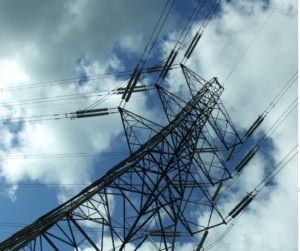 Sunday night the first automatic check in machine I try at the Virgin terminal in Brisbane is set to ‘Check-in baggage only’, and the next and the next. In fact they all are. The one attendant on duty is dealing with another passenger but I have 15 minutes to spare before check-in closes so I wait patiently. When I have her attention she says, cheerfully, ’the baggage tag printing isn’t working, hasn’t been working all afternoon. Ignore the instruction, just use the machine and get your tag at the baggage drop’. By now it is 40 minutes to check-in and, as it turns out, these machines require 45 minutes clear for passengers with baggage. I therefore go to the counter. Now I am beginning to suspect my seat has already been given away to a waitlisted passenger because the check-in assistants go into a huddle, make telephone calls, hold me up for many minutes and then announce that the check-in is closed! My only recourse is the Services Desk. Here the clerk, in a tone implying she is doing me a favour, says that, as this is the last plane for the night, she can book me on the first flight the following morning at a cost of $120. I explain that my delay was caused by their malfunctioning machines but it makes no difference, she simply repeats (many times) that she ‘understands how I feel’ (She doesn’t!) At this stage my only alternative is to book with another airline and pay the full fare, so I accept. I am now out two taxi fares, one overnight accommodation – and $120!
Sunday night the first automatic check in machine I try at the Virgin terminal in Brisbane is set to ‘Check-in baggage only’, and the next and the next. In fact they all are. The one attendant on duty is dealing with another passenger but I have 15 minutes to spare before check-in closes so I wait patiently. When I have her attention she says, cheerfully, ’the baggage tag printing isn’t working, hasn’t been working all afternoon. Ignore the instruction, just use the machine and get your tag at the baggage drop’. By now it is 40 minutes to check-in and, as it turns out, these machines require 45 minutes clear for passengers with baggage. I therefore go to the counter. Now I am beginning to suspect my seat has already been given away to a waitlisted passenger because the check-in assistants go into a huddle, make telephone calls, hold me up for many minutes and then announce that the check-in is closed! My only recourse is the Services Desk. Here the clerk, in a tone implying she is doing me a favour, says that, as this is the last plane for the night, she can book me on the first flight the following morning at a cost of $120. I explain that my delay was caused by their malfunctioning machines but it makes no difference, she simply repeats (many times) that she ‘understands how I feel’ (She doesn’t!) At this stage my only alternative is to book with another airline and pay the full fare, so I accept. I am now out two taxi fares, one overnight accommodation – and $120!
While waiting for the cab, I reflect on the way that Virgin started business. It put its focus on its people and they were not only given the chance to take initiative but actively encouraged to do so. It was said that recruitment of young people (and they were mostly young) was on the basis of their ‘improv’ ability – their ability to react quickly (and generally with humour) to circumstances and customers’ needs. Those early years were fun. The liveliness of the crew was in stark contrast to the more sober performances of the more established airlines.
So what is happening now? The machines had been malfunctioning ‘all afternoon’, but no one had taken the initiative to put up a sign explaining the cause and letting passengers know what to do. The programmed and robotic parroting of standard spiels and ‘I understand how you feel’ was so mechanical, the clerk might as well have been a machine herself. This is a far cry from the early days. What has gone wrong?
Question today: Is technology increasing or reducing customer service? And how is it impacting the ‘human element’ in our interactive systems? Short practical examples preferred.
 Here is a story about looking forward that you might enjoy.
Here is a story about looking forward that you might enjoy.
Many farmers use windmills to run bores for stock watering but pumps allow water to be extracted from much deeper resources. It is critical, however, that the pumps work or the stock dies. A friend had set up a business in selling – and servicing – pumps to farmers and his business was flourishing. He would routinely drive out and check all the pumps to ensure that they were working well.
Then he had the idea of buying a drone to do his survey work for him, but not a $500 hobbyist model, he decided on a top of the line model from the leading drone producers in Israel. He sent off his $27,000 cheque – only to have it returned to him! The Israeli government said it was not prepared to sell it to him for security reasons!
This was about 8 months ago. Not to worry, he said, soon there will be satellites I can connect to and I will be able to check the pumps using my smart phone!
This is a fellow who is keeping his eye on the rapid rate of technology change.
No specific question today – just enjoy!
 “General equilibrium”, an economics colleague explained, “is like a bowl of marbles, move one and we have to reckon with a change in every other one. Depending on the location of the original marble, the change will be large or small, but there will be always be a change.”
“General equilibrium”, an economics colleague explained, “is like a bowl of marbles, move one and we have to reckon with a change in every other one. Depending on the location of the original marble, the change will be large or small, but there will be always be a change.”
Thinking now of energy, a breakthrough in battery storage development would be the equivalent of moving a marble at the very bottom of the bowl. Anyone following the technical developments in batteries, and the vast resources now being devoted to this exercise, would expect to see this happening within the next five years (and probably sooner rather than later). In other words a breakthrough in the length of life and the economics of solar energy (and wind energy) storage is an almost certainty. But what then?
As important as technological innovations are, they are not the end of the story. In fact they are just the beginning. When battery storage possibilities improve, here are some of the impacts we can expect to see – a change in social attitudes towards energy usage; changes in manufacturing to take advantage of this; a great increase in the demand for solar panels; an increase in the willingness of some to go completely off grid; but also an interest of many more in adapting the present distribution network to serve localised production and sharing of power. Localised power production and distribution will enable greater security from events such as the recent power outage in South Australia and future impacts from climate change, as well as attacks on our critical infrastructure.
However, the change in demand for distribution networks will present a business model challenge for network owners which is why ‘economic innovation’ is now needed. No change will take place unless a profit can be made from it. Profit is not a dirty word. It is essential to good resource allocation.
So my question today is: what do we know of research into new business models that can promote and support the adaptation to distributed production and distribution that solar and wind power combined with good battery storage can make possible?
 By now, every Australian would know that the entire state of South Australia experienced a power system failure as severe storms with high winds uprooted 22 high voltage power pylons cutting off a major part of system generation at Port Augusta. For about 10 hours on Wednesday, we all effectively went ‘off grid’. Rolling blackouts or brownouts are not uncommon but this was the first time that an entire state has been without power.
By now, every Australian would know that the entire state of South Australia experienced a power system failure as severe storms with high winds uprooted 22 high voltage power pylons cutting off a major part of system generation at Port Augusta. For about 10 hours on Wednesday, we all effectively went ‘off grid’. Rolling blackouts or brownouts are not uncommon but this was the first time that an entire state has been without power.
At 3.30pm light and power was cut to my office. The desk top computer stopped – the laptop, however, continued working for another 5 hours. The land line phone connection ceased – but the mobile did just fine. Televisions stopped but information got out to everyone via Facebook on mobile connections. Power was mostly resumed at 1.10 am Thursday but, for ten hours, the battery was king!
Those in government responsible for the future of our infrastructure might well have asked themselves whether climate change might not engender future storms like this and, reflecting on the fact that the statewide blackout was caused by the necessity to protect the integrated system, perhaps they might also have asked themselves whether the efficiency benefits of integration might not come at a cost? They might then have considered whether a more disintegrated system of power generation and distribution, such as is now available with the growth of renewables such as wind and solar might not have mitigated the impact? After all, when the system goes down, those who are not reliant on it benefit. So it is curious that the Prime Minister and assortment of others antagonistic to wind and solar should blame renewables for the failure!
Or perhaps not so curious if the aim is to protect incumbent power and distribution networks? The electricity industry is well aware of the threat of wind and solar to its generation and distribution networks when long lasting batteries are developed, which is now, perhaps, not more than five years away.
Our Question today: Given that battery development will represent a major disruption to power production and distribution what should be the intelligent, forward looking, attitudes of our government – to block, or to adapt?
 The role of infrastructure is to create benefit. No one wants to see waste. And yet we have many failed, wasteful, projects. Some may fail for unforeseen, and unforeseeable, reasons. But many of them fail because their underlying assumptions were not tested. Nor is this only a problem for public infrastructure, private infrastructure is just as vulnerable.
The role of infrastructure is to create benefit. No one wants to see waste. And yet we have many failed, wasteful, projects. Some may fail for unforeseen, and unforeseeable, reasons. But many of them fail because their underlying assumptions were not tested. Nor is this only a problem for public infrastructure, private infrastructure is just as vulnerable.
Consider the Melbourne Docklands project where many of the apartments that the private sector built (and was encouraged to build) relied on the general assumption that people would be willing to sell up large properties on the outskirts of the city to take up apartment dwelling to benefit from closeness to city attractions – and pay large sums for the privilege. This assumption has proved not to be true in sufficient numbers to justify the construction and many apartments are still unsold or unlet.
In addition, many of the apartments that have been sold have been taken up as investment properties by wealthy Chinese seeking an alternative location for their money. No-one lives in these apartments. So the projections of demand for newly established retail outlets in the complex have not been met. Could this have been foreseen? Maybe the overseas investment was not obvious then. But certainly it would need to be taken into account from now on. However, retail demand depended on close to full occupancy.
Maybe this will self correct in 5 years or more. However, if take up was expected to take time then an interim strategy was needed. Now, what had the potential to be a very attractive redevelopment serving the wider community may now suffer if landlords attempt to recover their investment by letting their apartments to temporary dwellers who have no commitment to the area.
A serious consideration is whether the policy planners gave sufficient – or indeed any – thought to the problems that might be experienced on the outskirts of the city if their assumptions of mass departures to the city proved correct.
What questions do these stories raise in your minds? If you were on a decision committee for a large redevelopment project, what questions would you ask?
 My friend did not care for the streetscaping decision made by our local council and was angrily denouncing it to
My friend did not care for the streetscaping decision made by our local council and was angrily denouncing it to
us all at coffee, concluding “This is a useless council, they simply do not care for the individual”.
Which raises the question – should they? Council decisions may be made well or poorly, but they need to be judged by their effect on the community as a whole not on any one individual. In fact, when decisions are made in favour of an individual, we call that corruption!
So why do we get so aggrieved when councils make decisions not to our liking? For there is no doubt that we do. I suspect we fail to make the switch from being a customer to being a citizen. We carry on thinking ‘me’ when we should be thinking ‘we’.
My question for you today is a personal one:
Not how we can get others to make the switch, but rather how can we, ourselves, do it? What experiences have you had when you just naturally switched to ‘we’ thinking? What was it about those situations that caused the switch?

‘Rust taking over…’ Courtesy lamdogjunkie
When you look at infrastructure what do you see?
My boss had just returned from a visit to Rome and was telling me about his trip. What particularly inspired him was the Trevi Fountain. As he spoke of its magic, its beauty, its romance, its glory, his eyes lit up, his voice was reverent. Not surprising you might say since tourists always rave about the Trevi Fountain. Except that he was a Hydraulics Engineer and what he was describing to me was the fountain’s hydraulics! Engineers see things differently! I have seen my brother, another engineer, stare at the luggage carousel at the airport, fascinated by the design of the metal plates that enable it to turn the corners so smoothly. As an economist, it is unlikely that I would, but for them, have ever thought of the ingenious design of the Trevi’s hydraulics or the luggage carousel, but now I cannot help but see it too. That’s the thing, once you see things through someone else’s eyes, you can never ‘un-see’ it. You are forever changed, and the richer for it.
This is important for us as infrastructure decision-makers, and it is the rationale for the collaborative structure of ‘Talking Infrastructure’. We need to be able to see through the eyes of the engineer, the economist, the scientist, the environmentalist, the planner, and… even the artist. (Our picture today is from the free photo sharing site, Flickr. To see other pictures of rust or infrastructure decay through the eyes of the artist photographer, just type in infrastructure decay.)
So our task today is to consider how many different minds we can engage.
Let us multiply our perspectives.
 How true is this today?
How true is this today?
For a long time, I agreed with my friends in the water and wastewater business, that their assets were largely immune from technological change and that, in fact, such change as we were likely to see, eg, improvements in trenchless technology, would be to their management benefit. However, recent developments throw this easy, and comforting, assumption into question. Prolonged drought in Australia over a number of years has led to many changes to reduce our consumption of water (from the simple brick in the cistern to changing garden design to policies restricting the use of hoses for hosing down driveways and washing cars) and, in Canada, councils are struggling with pricing models that are not able to adjust to demand reduction brought about by environmental conservation. And now, consider the nanotechnological toilet. This is a toilet that does not need water, a sewage system or external power but instead uses nanotechnology to treat human waste, produce clean water and keep smells at bay, which is being developed by a British university.
Todays question:
What other changes (technological, cultural, environmental) are impacting our demand for what is shaping up to be the 21st century’s scarcest resource, and how is our infrastructure changing (or how does it need to change) to meet the challenge?
Again, links are welcome so that we can expand our media awareness, but please provide a brief summary so that following the link is optional, and limit links to two or the system may think that you are spam and throw you out!
 What is involved in putting new technology to work?
What is involved in putting new technology to work?
She waited patiently for the train, a small girl, slight of build with an enormous stack of books almost as heavy as she, the books she needed that day at University. I felt sorry for her. That was 20 years ago. Today technology makes it possible for that heavy load to be reduced to one tablet. However to apply the technology requires changes in business models (University lecturers supplement their incomes by writing books that become requisite texts), in intellectual property rights, in methods to deal with plagiarism (which is so much easier with digital texts), etc. These problems are being overcome and Universities today are a far cry from those of 20 years ago. But when we consider the impact of technology change we must also take these cultural and organisational adjustments into account and tracking trends in cultural change is as important as tracking changes in technology change. For example, a friend who runs a large accountancy firm declared, over ten years ago, that when computers were able to respond to voice commands, he would immediately change all the computers in his office. He didn’t type himself and so voice command control would, he believed, be a benefit. However, his most efficient and dedicated staff that were responsible for data input were a group of women, around 35 – 50 years of age, all of whom were experienced keyboard operators. I queried how willing – and able – they would be to change their method of operating. His company has yet to use voice activation. (And given the problems raised by Geoff Hudson, referenced in the last post, other issues will need resolution before it does.)
So our question today concerns trends in cultural change.
What trends have you observed? How are they affecting technology and our demand for infrastructure?
Media links welcome.
 Infrastructure is a means to an end – but it is not the only means.
Infrastructure is a means to an end – but it is not the only means.
As ends change, traditional infrastructure may not even be the best means. In ‘Talking Infrastructure’ we consider technological, demographic, environmental and other change and its impact on criteria for infrastructure decision-making.
Do we really want a road – or do we want to get from A to B? And what is so attractive about B anyway? Is it where we want to work, or shop, or play? Technology today is changing how we do all three. The key to understanding what technology can do, and how fast it can do it, is to recognise that it must be accompanied by cultural or organisational change. For example, Geoff Hudson, speaking on the ABC radio show, Okham’s Razor, argued that technology has made it possible for effective working from home for many years now and yet few businesses use it. He puts forward a detailed and fascinating plan for overcoming disadvantages currently experienced – lack of connection, suspicion, lack of control amongst others. ‘OK, so it is possible’ you might say, ‘but why bother?’ The answer lies in the interconnection of the new digital technology and physical infrastructure. We build more roads every year, yet congestion gets worse, commute times get longer, house prices in the cities rise and become unaffordable for many. Now ask yourselves, as we adopt voice instruction for our computers over keyboards, can our open space offices cope? Working from home can aleviate many problems – if we can solve the cultural and organisational problems.
So our first question, designed to expand awareness, is this:
Which technologies – e.g. iPhones, driverless cars, 3D printing, nanotechnology, bio-technology, you name it, are likely to increase the demand for roads and which are likely to reduce it – and why?
Links welcome but provide a brief summary for each so that following the link is optional and limit them to two links or the system may think you are spam and throw you out!

Recent Comments